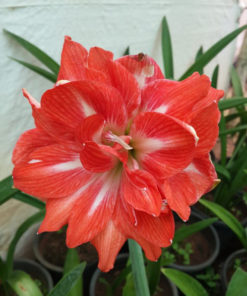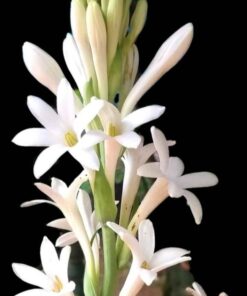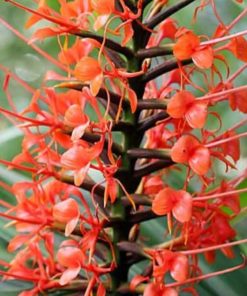Caladium Sorocaba bulb pack of 2 bulb
₹160.00
Out of stock
Email when stock available
SKU: CaladiumSorocaba
Category: Summer Bulbs
Caladium Sorocaba is a popular variety of caladium known for its striking foliage. Caladiums are typically grown from tubers or bulbs rather than seeds. If you have a caladium ‘Sorocaba’ bulb, here are some general steps to plant and care for it:
- Caladium Sorocaba Selecting the Bulb: Choose a healthy caladium bulb. It should be firm and plump, without any signs of rot or damage.
- Planting Time: Caladiums are usually planted in the spring after the danger of frost has passed and the soil temperature has warmed up.
- Soil Preparation: Choose a well-draining, nutrient-rich soil. Caladiums prefer slightly acidic soil with a pH around 6.0 to 6.5.
- Planting Depth: Plant the bulb with the knobby side facing up, about 1 to 2 inches deep. If you’re planting multiple bulbs, space them about 8 to 12 inches apart.
- Location: Choose a location that receives partial to full shade. Caladiums prefer indirect sunlight or dappled shade. Avoid direct sunlight, as it can scorch the delicate foliage.
- Watering: Keep the soil consistently moist but not waterlogged. Water deeply whenever the top inch of soil feels dry. During hot summer months, you may need to water more frequently.
- Fertilizing: Use a balanced, water-soluble fertilizer formulated for flowering plants. Apply fertilizer according to the manufacturer’s instructions, typically every 4-6 weeks during the growing season.
- Mulching: Apply a layer of organic mulch, such as shredded bark or compost, around the base of the plants. Mulch helps retain soil moisture and suppresses weeds.
- Temperature and Humidity: Caladiums thrive in warm, humid conditions. If you live in a cooler climate, consider planting them in containers that can be brought indoors during the winter.
- Pest and Disease Control: Keep an eye out for common pests such as aphids, spider mites, and snails. Treat any infestations promptly with insecticidal soap or horticultural oil. Also, ensure good air circulation around the plants to prevent fungal diseases.
- Overwintering: In regions where temperatures drop below freezing, dig up the bulbs before the first frost. Allow them to dry out for a few days, then store them in a cool, dry place for the winter. Replant them in the spring once the danger of frost has passed.
Be the first to review “Caladium Sorocaba bulb pack of 2 bulb” Cancel reply
You must be logged in to post a review.
Related products
Sale!
Rated 5 out of 5
₹99.00
Rated 4 out of 5
₹99.00
















Reviews
There are no reviews yet.